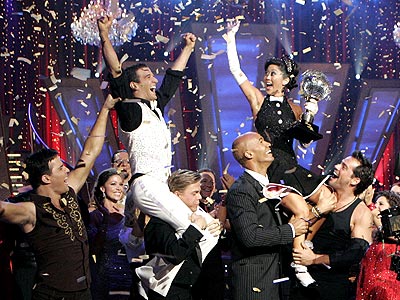In a recent article celebrating the 200th birthday of the tin can, the Washington Post pointed out that “Al the Can” has a Facebook and Twitter page to encourage recycling. This is surprisingly not the first time we have seen inanimate objects with Twitter handles.
Ford rigged up “AJ” (short for “American Journey”) the Fiesta to tweet updates automatically during its trek across America. The tweets reflect external cues the car could sense, like GPS location, weather, speed, traffic, hills, etc. Followers of @AJtheFiesta receive updates like, “It’s getting pretty dark; time to put the headlights on." or twitpics of test drivers taken by AJ's cockpit camera.
Ford rigged up “AJ” (short for “American Journey”) the Fiesta to tweet updates automatically during its trek across America. The tweets reflect external cues the car could sense, like GPS location, weather, speed, traffic, hills, etc. Followers of @AJtheFiesta receive updates like, “It’s getting pretty dark; time to put the headlights on." or twitpics of test drivers taken by AJ's cockpit camera.
 |
| AJ the Tweeting Ford Fiesta (http://www.indiancarsbikes.in/wp-content/uploads/2010/07/wheels-Ford-Twitter-Fiesta-blogSpan.jpg) |
Similarly, “Precious” the bicycle has been tweeting during its own American journey to raise money for LIVESTRONG. Precious tweets automatically by selecting from a pool of hundreds of pre-written tweets based on the external factors it senses like, GPS location, weather, road quality, and speed.
While Precious’s goal is to raise money for charity, Ford says that AJ is a first step toward enabling cars to communicate with their drivers. They envision a car that can alert the driver when it needs an oil change, when it is passing an interesting attraction, or perhaps when it is near a cheap gas station. Maybe some day in the future your car will collaborate with your To-Do List iPhone app to plan errand routes or send you reminders when you are near the bank or the dry cleaners.
Why stop with cars? Imagine having a refrigerator that sent you energy-saving tips or an oven that sent you recipes. What if the next generation of television sets sent you a message when your show was about to come on? Would life be simpler if your home alarm clock was synced with your work Outlook calendar so you never missed another early meeting? If we can make a car tweet, there is no end to the possibilities.
While Precious’s goal is to raise money for charity, Ford says that AJ is a first step toward enabling cars to communicate with their drivers. They envision a car that can alert the driver when it needs an oil change, when it is passing an interesting attraction, or perhaps when it is near a cheap gas station. Maybe some day in the future your car will collaborate with your To-Do List iPhone app to plan errand routes or send you reminders when you are near the bank or the dry cleaners.
Why stop with cars? Imagine having a refrigerator that sent you energy-saving tips or an oven that sent you recipes. What if the next generation of television sets sent you a message when your show was about to come on? Would life be simpler if your home alarm clock was synced with your work Outlook calendar so you never missed another early meeting? If we can make a car tweet, there is no end to the possibilities.






